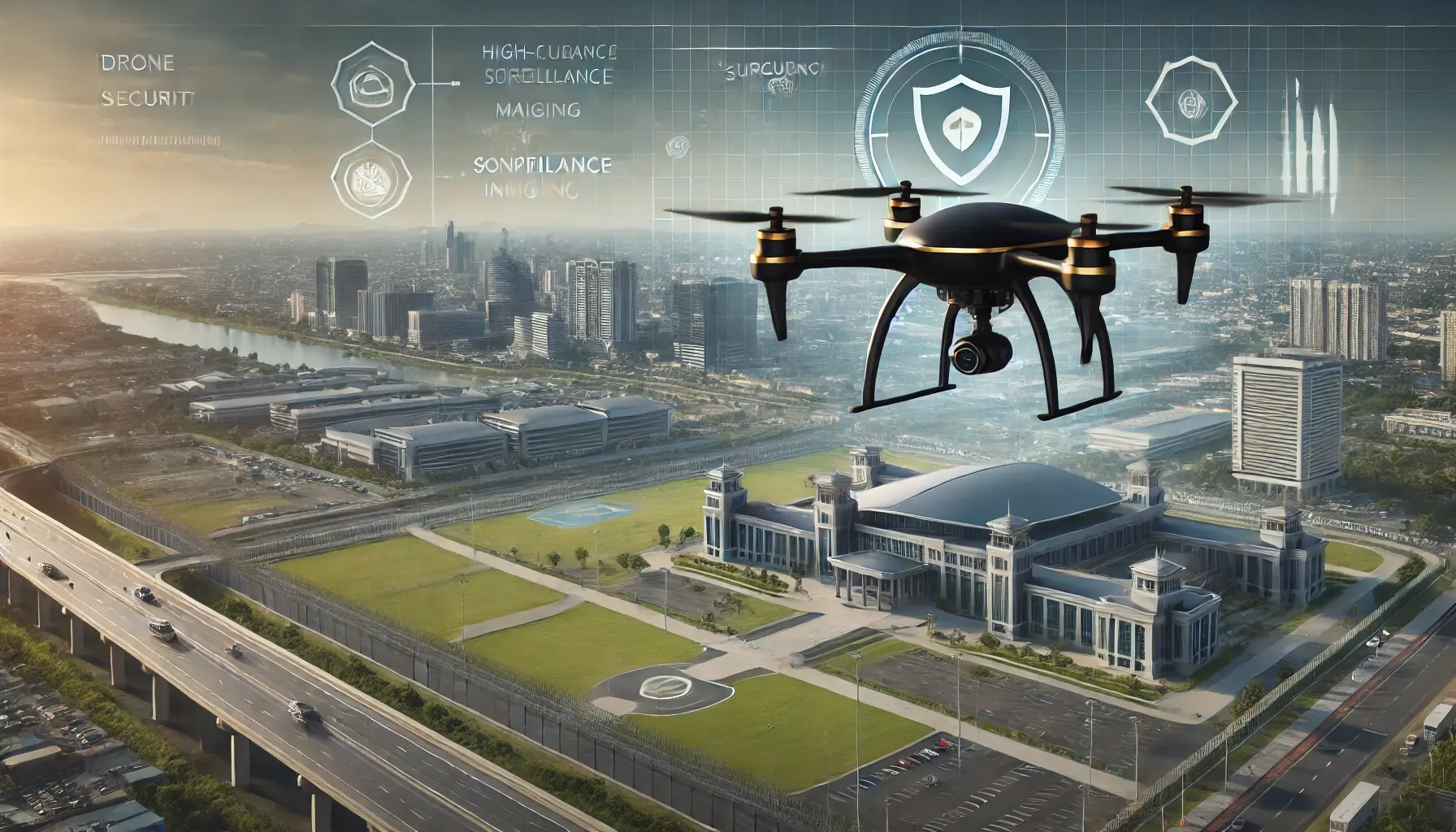Securing government facilities, whether municipal buildings, military bases, or sensitive government sites, is a top priority. These properties house high-value assets, sensitive information, and personnel critical to national and local operations. However, the sheer scale and complexity of these facilities often expose security gaps that traditional methods cannot address effectively. Drone security provides an innovative solution, combining advanced surveillance, threat detection, and operational efficiency to enhance safety at government facilities. Here’s how drones are transforming security in these environments. Need help setting up aerial drone security for your government facility?
1. Comprehensive Coverage of Vast Areas
The Challenge: Government facilities often span large perimeters, making it difficult to monitor all areas effectively with stationary cameras or ground patrols. Blind spots increase the risk of unauthorized access or unnoticed incidents.
How Drones Help: Drones equipped with high-resolution cameras and thermal imaging provide aerial views that cover expansive areas in real time. They can patrol perimeters, monitor restricted zones, and identify vulnerabilities such as damaged fences or unguarded entry points.
Benefits:
-
Elimination of blind spots.
-
Ability to quickly scan and secure large perimeters.
-
Enhanced situational awareness for security teams.
Example Use Case: A military base implemented drones to patrol its 50-acre perimeter, reducing security gaps and detecting unauthorized activity within minutes.
2. Proactive Threat Detection
The Challenge: Detecting and addressing potential threats before they escalate is crucial for high-risk government sites. Traditional systems are often reactive, addressing issues only after they occur.
How Drones Help: Drones equipped with AI-powered analytics can identify unusual patterns, such as unauthorized vehicles or individuals, and alert security teams in real time. Features like license plate recognition and facial detection further enhance their ability to proactively mitigate threats.
Benefits:
-
Early identification of potential risks.
-
Real-time alerts for immediate response.
-
Reduction in false alarms through advanced AI filtering.
Example Use Case: A municipal government building used drones to monitor parking lots and public spaces, identifying a suspicious vehicle that was later linked to a potential security threat.
3. Enhanced Monitoring in High-Risk Zones
The Challenge: Sensitive areas, such as data centers, weapon storage facilities, or restricted airfields, require heightened security measures. Ground-level monitoring often struggles to provide sufficient oversight.
How Drones Help: Drones excel at monitoring high-risk zones through continuous aerial surveillance. They can hover over sensitive areas, providing 24/7 coverage and detailed visuals of all activities. Thermal imaging and night vision capabilities ensure effective monitoring in low-light conditions.
Benefits:
-
Continuous oversight of critical areas.
-
Reduced reliance on human patrols in hazardous environments.
-
Detailed documentation of activities for audit purposes.
Example Use Case: A sensitive government site deployed drones to monitor its restricted airfield, ensuring compliance with aviation safety protocols while deterring unauthorized activity.
4. Cost-Effective Security Solutions
The Challenge: Budgets for government facilities are often limited, making it difficult to implement comprehensive security measures without overspending.
How Drones Help: Drones reduce costs by automating patrols and minimizing the need for extensive ground personnel. Their scalability allows facilities to start small and expand coverage as needed, ensuring a cost-effective approach.
Benefits:
-
Reduced operational costs compared to traditional security methods.
-
Scalability for large or small facilities.
-
Long-term savings through efficient resource allocation.
Example Use Case: A municipal facility replaced multiple static cameras and hired patrol teams with drones, cutting annual security costs by 30%.
5. Compliance with Government Regulations
The Challenge: Government facilities must adhere to strict security and privacy regulations. Ensuring compliance while implementing new technologies can be a complex process.
How Drones Help: Modern drone systems are designed to comply with federal and local regulations. Features like geofencing ensure drones operate only within authorized zones, while encrypted data storage protects sensitive information.
Benefits:
-
Full compliance with security and privacy mandates.
-
Enhanced data protection and audit trails.
-
Confidence in meeting regulatory requirements.
Example Use Case: A government research facility implemented geofenced drone operations to monitor its campus while avoiding nearby residential areas, ensuring both compliance and resident trust.
Key Features of Drone Security for Government Facilities
| Feature | Importance |
|---|---|
| High-Resolution Cameras | Provides clear visuals for effective monitoring. |
| Thermal Imaging | Enables surveillance in low-light conditions. |
| AI Analytics | Detects anomalies and reduces false alarms. |
| Geofencing | Ensures compliance with restricted zones. |
| Automated Patrols | Reduces reliance on manual operations. |
| Real-Time Alerts | Enhances response times for potential threats. |
Benefits of Drone Security for Government Facilities
-
Comprehensive Coverage: Ensures no area is left unmonitored.
-
Proactive Threat Detection: Identifies risks before they escalate.
-
Cost Efficiency: Reduces reliance on costly static infrastructure and personnel.
-
Regulatory Compliance: Adheres to security and privacy mandates.
-
Operational Flexibility: Scalable solutions for facilities of all sizes.
Frequently Asked Questions (FAQs)
Q: Are drones suitable for all types of government facilities? A: Yes, drones can be customized to meet the unique needs of various facilities, from municipal buildings to military bases.
Q: How do drones ensure privacy compliance? A: Features like geofencing and encrypted data storage restrict monitoring to authorized areas and protect sensitive information.
Q: Can drones operate in adverse weather conditions? A: Many professional-grade drones are built to withstand rain, wind, and extreme temperatures, ensuring reliability.
Q: How do drones integrate with existing security systems? A: Drones can seamlessly connect with CCTV networks, access control systems, and alarms, enhancing overall security.
Q: What is the ROI of implementing drone security? A: Drones reduce costs by automating patrols, minimizing manpower needs, and preventing incidents, delivering measurable savings over time.
.png)
.png)
.png)

.png)
.png)

.png)
.png)
.png)
.png)
